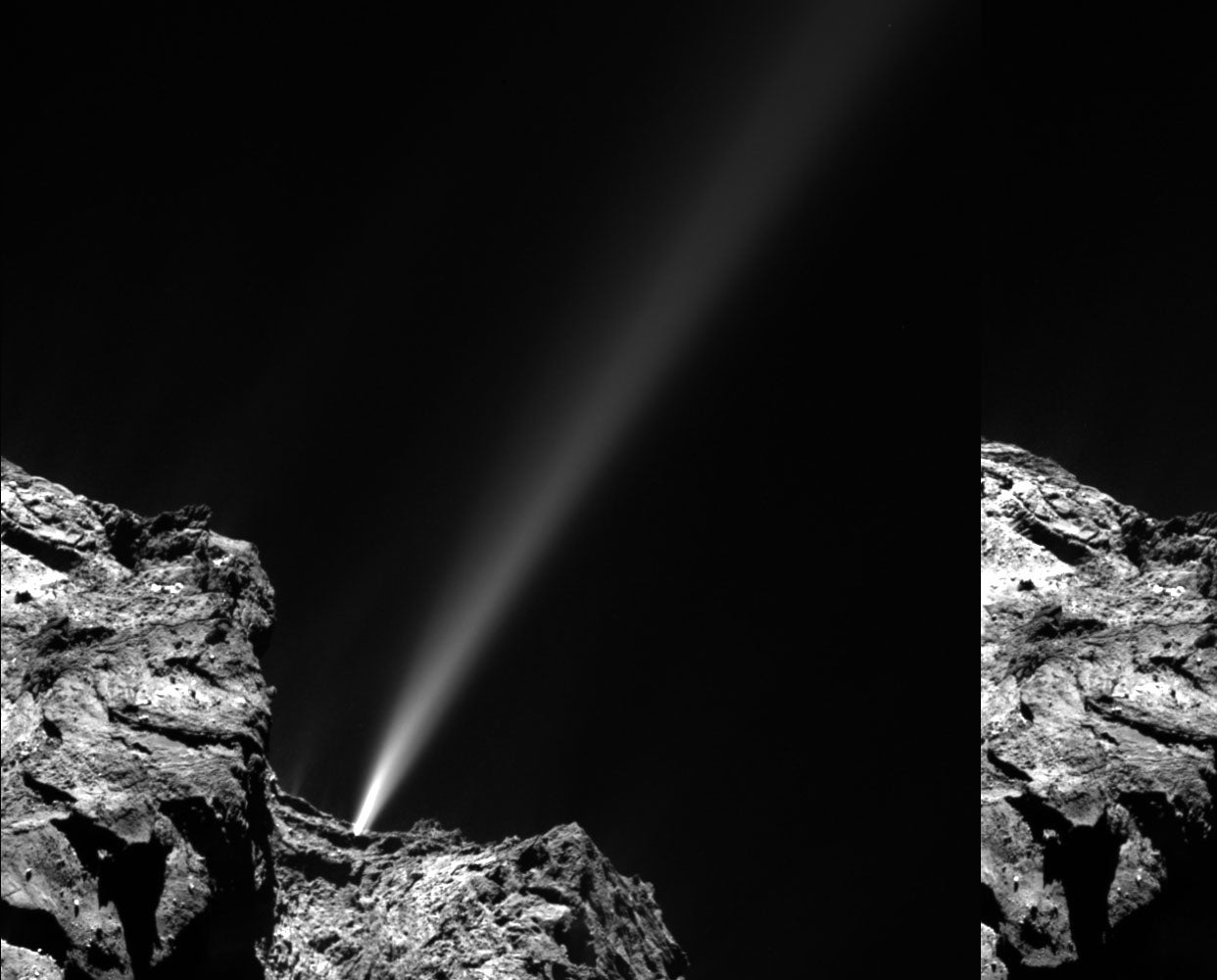Rosetta comet fires off its most spectacular blast yet
The comet has reached its closest point to the sun

Your support helps us to tell the story
From reproductive rights to climate change to Big Tech, The Independent is on the ground when the story is developing. Whether it's investigating the financials of Elon Musk's pro-Trump PAC or producing our latest documentary, 'The A Word', which shines a light on the American women fighting for reproductive rights, we know how important it is to parse out the facts from the messaging.
At such a critical moment in US history, we need reporters on the ground. Your donation allows us to keep sending journalists to speak to both sides of the story.
The Independent is trusted by Americans across the entire political spectrum. And unlike many other quality news outlets, we choose not to lock Americans out of our reporting and analysis with paywalls. We believe quality journalism should be available to everyone, paid for by those who can afford it.
Your support makes all the difference.Rosetta’s comet has fired off the brightest “fireworks” ever seen as it reaches its closest point to the Sun.
As a comet approaches a star and warms, ice begins to vaporise and gas jets burst out, making the comet speed up.
During these outbursts, known as perihelion, scientists say the material in the jet was travelling at 10 metres per second and the comet could potentially split in half with the force.
One recent outburst even proved so strong that it pushed away an incoming solar wind, streams of magnetic energy from the Sun.
The jets took place on 29 July and were registered by several Rosetta instruments at their vantage point of 186km away from the comet.
Images taken by Rosetta's scientific camera Osiris show a jet of gas and dust emerging from the side of the 'neck' joining the comet's two lobes.
A 500-metre-long fracture has already been identified in the neck, this could lead to the break up of the comet if interior forces build up due to rising temperatures.
If the rupture does occur, scientists believe the Rosetta will send back striking images.
Dr Carsten Guttler, Osiris team member at the Max Planck Institute for Solar System Research in Gottingen, Germany, said: "This is the brightest jet we've seen so far. Usually the jets are quite faint compared to the nucleus and we need to stretch the contrast of the images to make them visible, but this one is brighter than the nucleus."
The Rosetta space probe was launched in 2004 and in November last year the mission performed the first ever successful landing on a comet.
Additional reporting by PA
Subscribe to Independent Premium to bookmark this article
Want to bookmark your favourite articles and stories to read or reference later? Start your Independent Premium subscription today.
Join our commenting forum
Join thought-provoking conversations, follow other Independent readers and see their replies
Comments